Debrzno
Debrzno [ˈdɛbʐnɔ] (formerly Frydląd Pomorski, German: Preußisch Friedland)[1] is a town in Pomeranian Voivodeship, Poland.
Debrzno | |
|---|---|
Fragment of the town square | |
 Flag 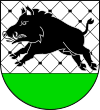 Coat of arms | |
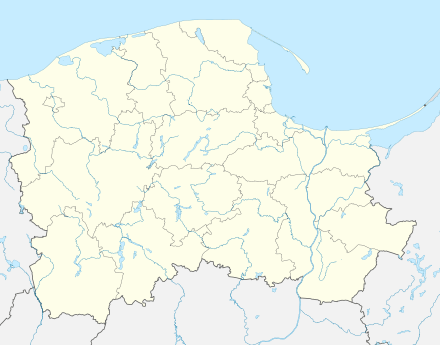 Debrzno  Debrzno | |
| Coordinates: 53°32′N 17°14′E | |
| Country | |
| Voivodeship | |
| County | Człuchów |
| Gmina | Debrzno |
| Town rights | 1354 |
| Area | |
| • Total | 7.52 km2 (2.90 sq mi) |
| Population (2006) | |
| • Total | 5,359 |
| • Density | 710/km2 (1,800/sq mi) |
| Postal code | 77-310 |
| Website | http://www.debrzno.pl |
History
The first mention of the village dates back to the 12th century. The region was part of medieval Poland before the 14th-century Teutonic invasion. The town was mentioned as Fredeland in a document of 1346, when the manager of the Teutonic Order in Człuchów assigned four Hufen territory to Tylo. 1354 the Grandmaster Winrich von Kniprode granted town rights to the town. After the outbreak of the uprising against the Teutonic Knights, in 1454 the town recognized the Polish King as rightful ruler. During the Thirteen Years' War it was defended against the Teutonic Knights in 1455, but it was later lost again.[2] In 1461 the town was recaptured by King Casimir IV Jagiellon, but later it fell again to the Teutonic Knights.[2] In 1464 the Teutonic Knights left the city, previously plundering and burning it.[2] In the peace treaty signed in Toruń in 1466, the town was recognized by the Teutonic Order as part of Poland, and after twelve years King Casimir IV of Poland confirmed the municipal rights of Debrzno. Administratively it was part of the Pomeranian Voivodeship until the Partitions of Poland. In 1627 the town was plundered by the Swedes.[2]
Former military Debrzno Airfield is located nearby.
Gallery
- Church of the Assumption
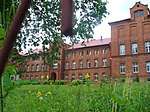 Former Teacher's Seminar
Former Teacher's Seminar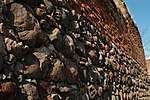 Medieval defensive walls
Medieval defensive walls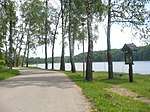 Lake in Debrzno
Lake in Debrzno
References
- "Former Territory of Germany" (in German). 2017-11-27.
- Słownik geograficzny Królestwa Polskiego i innych krajów słowiańskich, Tom II, Warsaw, 1881, p. 417